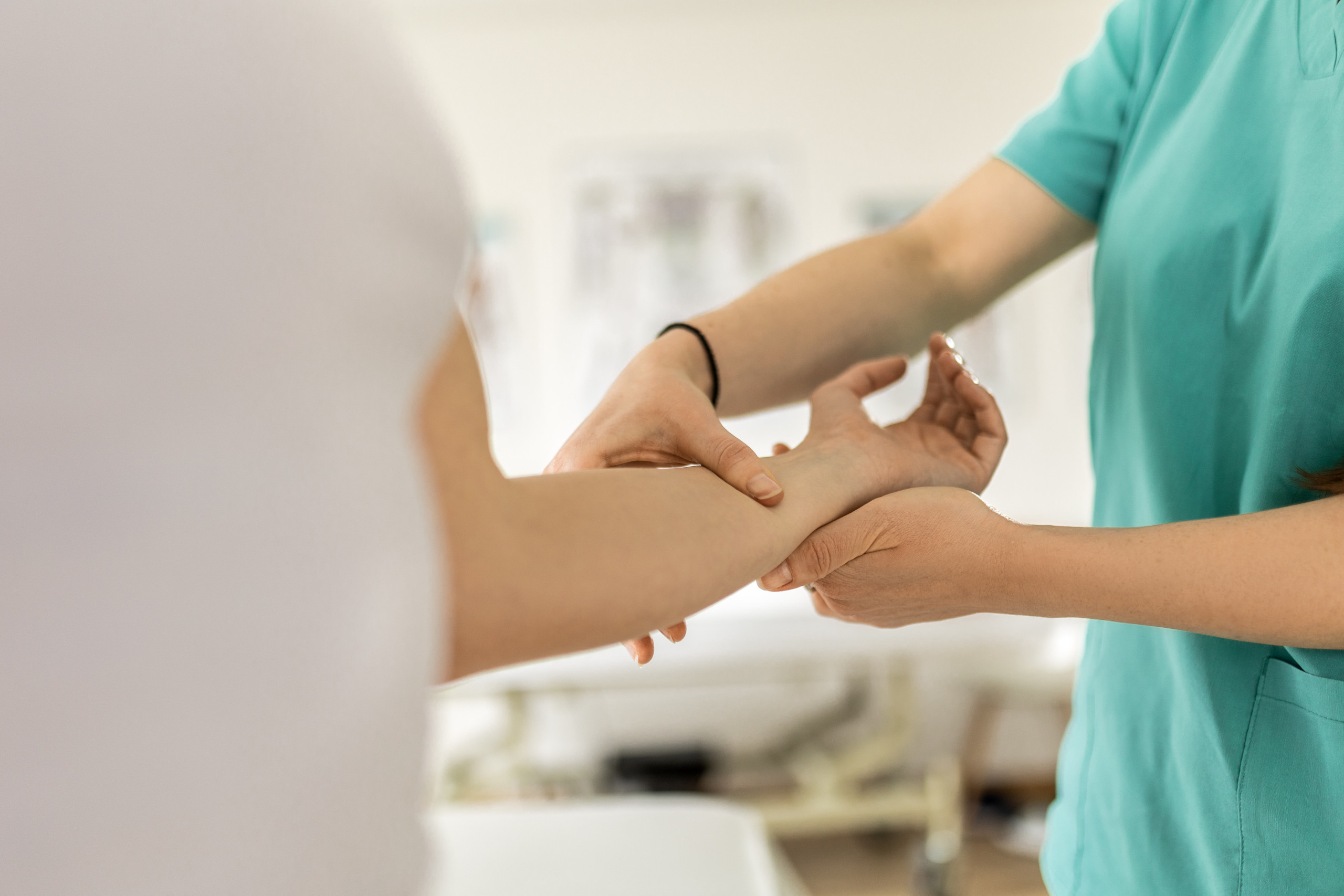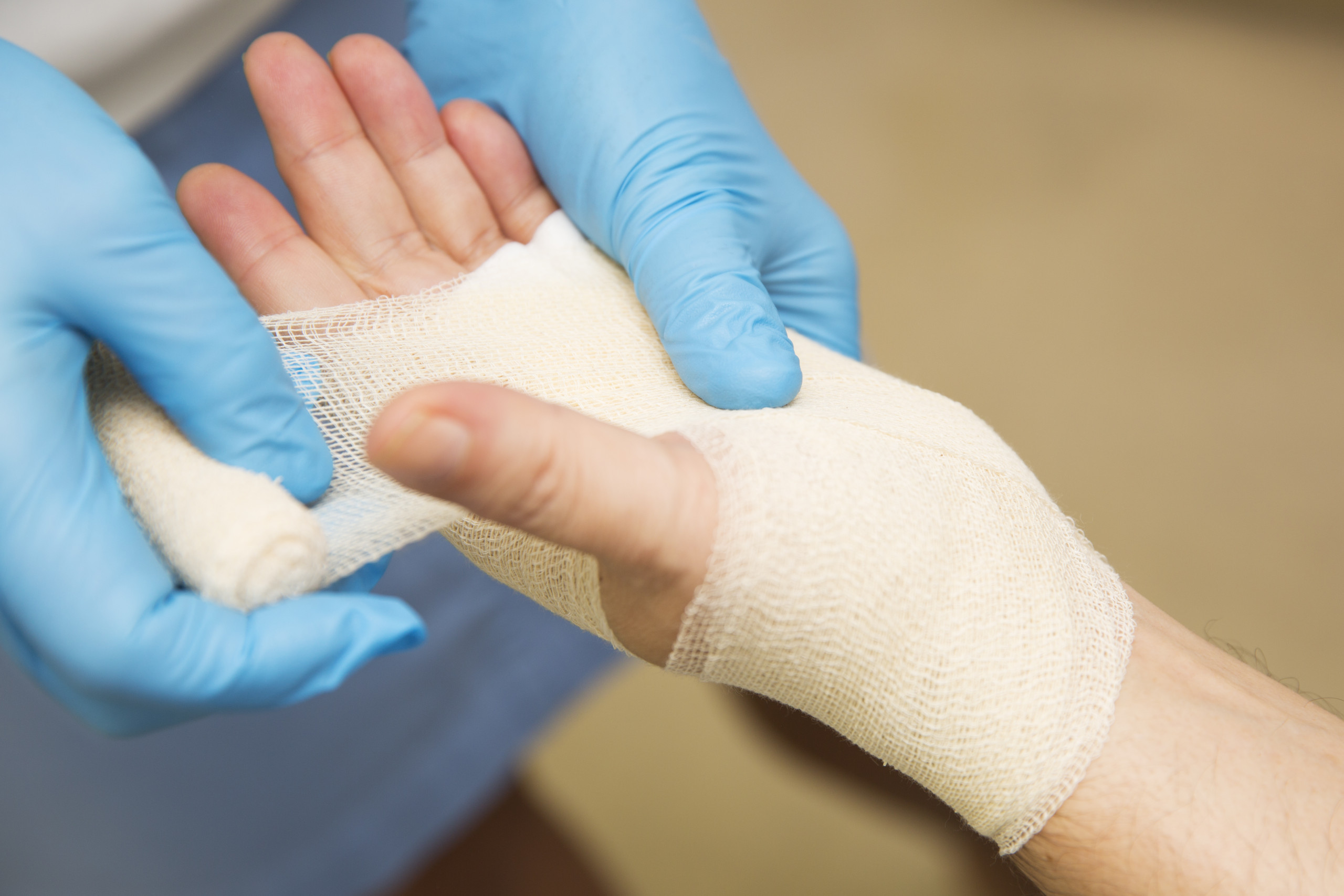A Life Free of Wrist, Hand and Shoulder Pain Is Possible. Philly Doctors Explain How.

Once upon a time, you had the agility to dance the night away and bounce back the next morning without even a headache. But somewhere along the line, you grew up—and now, it can feel like every movement is accompanied by aches and pains that feel as random as they do uncomfortable. Your hands and fingers go numb or tingle while writing down a grocery list, or reaching for cereal on the top shelf sends a shooting pain down your arm. You’re left feeling old, accepting that this is what your life looks like now.
And yes, age can increase your likelihood of developing certain orthopedic conditions, but there’s good news: They’re treatable. You don’t have to live in pain. Despite misconceptions that your discomfort is inevitable and permanent, Philly is home to excellent orthopedic care that can transform your hand, wrist or shoulder pain into freedom and mobility.
“There’s an age component and a genetic component to these conditions,” explains Dr. Adam Strohl, a physician specializing in hand and upper extremity care at Philadelphia Hand to Shoulder Center. But, Dr. Strohl emphasizes, regardless of cause, treatment is not only possible—it’s often simpler than patients anticipate.
We talked to Dr. Strohl and his colleague Dr. Kenneth Kearns, who specializes in injuries and ailments to the shoulder and elbow, about three of the most common conditions afflicting Philly’s adults and how healing is possible.
- Dr. Adam Strohl
- Dr. Kenneth Kearns
Carpal tunnel syndrome
Carpal tunnel syndrome occurs when a specific region of the median nerve—which runs from the shoulder down the arm and into the fingers—is compressed. According to Dr. Strohl, most patients are 45 years old or older when they begin to experience these discomforts, but the condition can manifest at any age and can be more likely to occur in patients with other existing conditions, like diabetes or an inflammatory disease.
“With age, your tendons get swollen, and your ligaments get thicker and less pliable,” explains Dr. Strohl. “But just because you have pain in your hand doesn’t mean you have carpal tunnel.”
Knowing what’s actually wrong is key to feeling better, and that’s why it’s so important for providers to listen to their patients—which is what physicians at the Hand to Shoulder Center do. With his patients, Dr. Strohl listens to their symptoms and examines them to get an accurate picture of their condition and its severity, and their medical history and lifestyle.
And to identify carpal tunnel syndrome, he’ll look for numbness and tingling in the hand, periodically—like when typing on a computer—or persistently. From there, he can determine if a patient is likely to recover with just a steroid injection and anti-inflammatory medications, or if a minimally invasive surgical option is best.
But regardless of what the ideal treatment turns out to be, Dr. Strohl emphasizes that any pain interfering with your day-to-day function is worth getting checked out—and it’s worth seeing a doctor as early as you can, so you don’t have to put further stress on the ailment and risk it worsening.
“Most people think there’s a long downtime and that makes them afraid to have surgery, but that’s a misconception,” he says. “And I think that can be what stops a lot of people from getting treatment for too long.”

Trigger finger
Painful stiffness, swelling, locking and clicking in the finger are the key identifiers of a trigger finger—a very common condition that can result from age, injury, or a pre-existing condition like arthritis, thyroid disease or diabetes. But when a finger becomes inflamed and immobile, what’s really going on physiologically, and how can it be remedied?
“There are tendons that run through the finger, and when they get thick and swollen from inflammation or stress, they no longer fit through the tunnel of the finger,” explains Dr. Strohl. And without treatment, trigger finger can get worse and cause more problems with mobility and flexibility in the hand, or it can occur in multiple fingers.
“It’s very painful, and if people wait too long to be seen, it can become debilitating,” says Dr. Strohl. “You get to a point where you can’t even really use your hand or make a fist.”
As Dr. Strohl points out, being seen by a trustworthy, knowledgeable and experienced provider is key to healing your hand and finger pain, whether it turns out to be trigger finger or not. “Don’t just go off what the internet says,” he says. “Be evaluated.”
And from that evaluation can come successful treatment. If patients experience symptoms like pain in the palm and locked fingers and are diagnosed with a trigger finger, there are multiple options they can take, depending on medical predispositions and lifestyle.
“The treatments available are excellent,” Dr. Strohl explains. “Some patients are successful with activity modification or anti-inflammatories, or we can do steroid injections in the office.” And in more severe cases, when these treatments fail or a patient has other conditions causing pain such as carpal tunnel syndrome or arthritis, Dr. Strohl can perform a same-day surgery that, coupled with physical therapy, has a proven success rate.
Ultimately, when it comes to the conditions Dr. Strohl treats, he urges patients to listen to their bodies and take it seriously when pain interrupts their ability to sleep, work or live comfortably. Then, they can come to the Hand to Shoulder Center for an appropriate diagnosis and an effective treatment plan with minimal downtime.

Rotator cuff tears
Contrary to popular belief, a shoulder injury doesn’t always manifest as direct pain in the shoulder area. According to Dr. Kearns, a seemingly random pain in the outside of your arm can actually be caused by a tear in the rotator cuff, a group of muscles and tendons that envelop the shoulder and keep it secured.
“The function of the rotator cuff is to keep the shoulder centered in its socket so that your arm can move in space,” Dr. Kearns says. So, when that function is interrupted, patients often experience pain when they go to grab things behind them or overhead. That’s because, he points out, your body isn’t pinpoint accurate as to where it experiences pain.
And because wrongful assumptions or misinformation might lead patients to believe they have different injuries than they do, Dr. Kearns examines patients to ensure a correct diagnosis. “We test for pain and weakness, and we’ll confirm a rotator cuff tear with an MRI,” he says. “There are two main types of rotator cuff tears, which I treat differently.”
The first type is an acute rotator cuff tear, caused usually by falling onto an outstretched hand or an elbow. That landing can force the shoulder up, causing a tendon to rip off the bone. These tears, according to Dr. Kearns, have the best outcomes when treated acutely with a surgery that targets the affected area.
The second type is a degenerative rotator cuff tear, which Dr. Kearns refers to as “the gray hairs and wrinkles of the shoulder.” He says that, odds are, most people will experience some type of rotator cuff tear as they age—and because the body didn’t necessarily go through an injury to result in this tear, the best treatment option can be more variable.
“We don’t typically jump to surgery for these tears,” he explains. “Therapy can help significantly. And if it doesn’t, that’s when we pivot.”
Those other options include steroid injections or surgery. And while Dr. Kearns acknowledges that a shoulder surgery can be a more difficult recovery process than other surgeries, innovative methods mean that people can make full recoveries with these repairs, even if they might think they’re “too old to have surgery.”
Whatever care plan he and a patient decide to take, Dr. Kearns, like Dr. Strohl, believes that early intervention is always preferred. The natural progression of a rotator cuff tear, he says, is that it will increase in size about 50 percent of the time—which means that the tear will become both more painful and more difficult to successfully treat.
Still, even if you’ve been battling this pain for so long you think it isn’t worth seeing a doctor, you won’t be without options if you go to the Hand to Shoulder Center. What both Drs. Kearns and Strohl emphasize to their patients is that they’re under the care of providers who will listen to them, and who have tried and true records of helping Philadelphians break free of their orthopedic pain.
Philadelphia Hand to Shoulder Center has 16 locations throughout Pennsylvania and New Jersey. Click here to find the closest one to you and here to learn more and request an appointment at Philadelphia Hand to Shoulder Center.
This is a paid partnership between Philadelphia Hand to Shoulder Center and Philadelphia Magazine
